Growing up, I’ve always had a passion for playing the piano. Every moment I could, I would be filling the room with the beautiful and graceful sounds of classical music. But little did I know that one day I would never be able to do that again. As I was intensely practicing Beethoven’s Piano Sonata “Pathetique” for an upcoming recital, I felt tingling on the tips of my fingers. At first, I ignored it as it didn’t bother me too much. I was more focused on perfecting my technique. Just as I hit the piano keys for the first chord, I felt an intense pain shoot up my right wrist. I felt paralyzed and incapacitated. Since then, I was never able to perform the piano at the same level again. I cannot play for more than a few minutes without pain shooting up and down my right arm. After getting diagnosed with carpal tunnel syndrome, I sought out all of the possible treatments I could, desperate to play the piano once again. Conventional treatment and wrist braces only provided short-term relief. However, I am hopeful about acupressure for carpal tunnel. In this article, I’ll show you how self-acupressure for carpal tunnel syndrome could also help you.
What Is Carpal Tunnel?

Carpal tunnel syndrome is a disorder that is caused by constriction of the median nerve, which runs through your wrist and up your arm. The median nerve runs through a passage called the carpal tunnel. Any pressure or irritation to this area can result in pain, numbness, tingling, and discomfort. The median nerve also goes through the elbow, shoulders, and neck, so it is not uncommon to experience carpal tunnel symptoms in these areas. It can be difficult to pinpoint the source of carpal tunnel for most people. Some factors that put people more at risk of getting carpal syndrome are gender, pregnancy, neurological disorders, medications, obesity, repetitive movement of the wrist, and a whole host of others. Conventional treatment involves changing habits, stretching exercises, wearing splints or braces, anti-inflammatory drugs, corticosteroid injections, and even surgery. Unfortunately, these don’t work for everyone, which is why many are now looking to acupressure for carpal tunnel for relief.
Does Acupuncture Work For Carpal Tunnel?
Acupressure was derived from acupuncture, a traditional Chinese medicine (TCM) technique used to treat a variety of ailments throughout the body. In treatment, professional acupuncturists insert thin needles into various points throughout the body called “acupuncture points” or “acupoints”. These are points along energy channels in the body that can be manipulated to promote healing. In TCM theory, energy imbalances can cause bodily disorders, so acupuncture is one technique used to restore balance. While this treatment is relatively new to Western society, more and more scientific studies are proving how effective acupuncture is for a variety of issues, including carpal tunnel. Participants in the research studies reported a significant reduction in pain, numbness, and weakness with the treatment of carpal tunnel acupuncture points. If you are considering acupuncture treatment, keep in mind that it is not a cure. You will still have to manage your condition, but hopefully, to a lesser degree.
Can You Apply Acupressure For Carpal Tunnel?

Hesitant about needles? Try acupressure for carpal tunnel instead! Just like acupuncture, acupressure can be used to treat many problems in the body. It operates under the same theories and concepts as acupuncture but relies on direct pressure and massage techniques at certain acupoints. This means that anyone can perform acupressure for carpal tunnel. Research also backs up the effectiveness of this technique. Once you have learned about the pressure points to relieve carpal tunnel below, you can begin to perform acupressure by massaging each acupoint for about 30 seconds to 2 minutes as tolerated. This can be done as frequently as you want and at just about anywhere you are seated comfortably. Make sure that you are not applying direct pressure to wounds, bruises, or scars, as this technique could worsen them.
9 Acupressure Points For Carpal Tunnel Syndrome
In TCM, it is believed that carpal tunnel syndrome results from increased heat and dampness in the wrist, also known as inflammation and swelling. You can relieve this pressure on the median nerve by performing acupressure for carpal tunnel.
1. Acupoint: LI-11 (Other Names: Large Intestine-11/Qu Chi/Pool at the Crook)
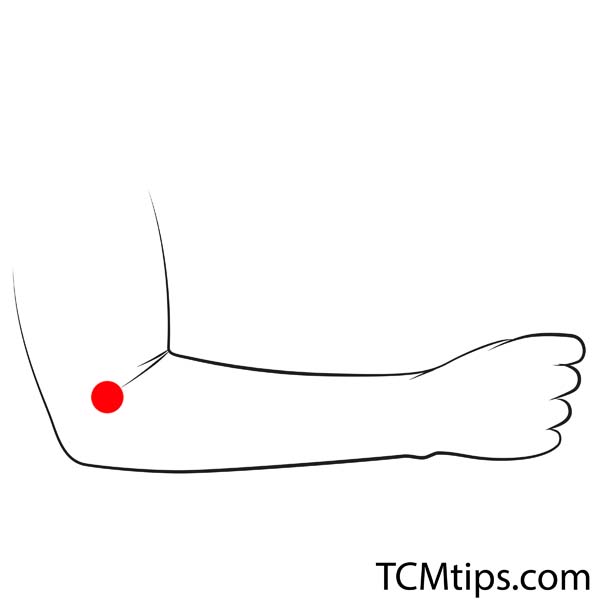
LI-11, also known as “quchi” or “pool at the bend”, is located at the crease of your elbow. To locate it, bend your arm and find the end of the crease on the outside of your elbow. This acupoint is one of the best ones to target for clearing heat in the body, which is especially useful for pain, weakness, and swelling that occurs in carpal tunnel syndrome.
LI-11 is commonly used as one of the acupressure points for the immune system.
2. Acupoint: LI-10 (Other Names: Large Intestine-10/Shou San Li/Arm Three Miles)
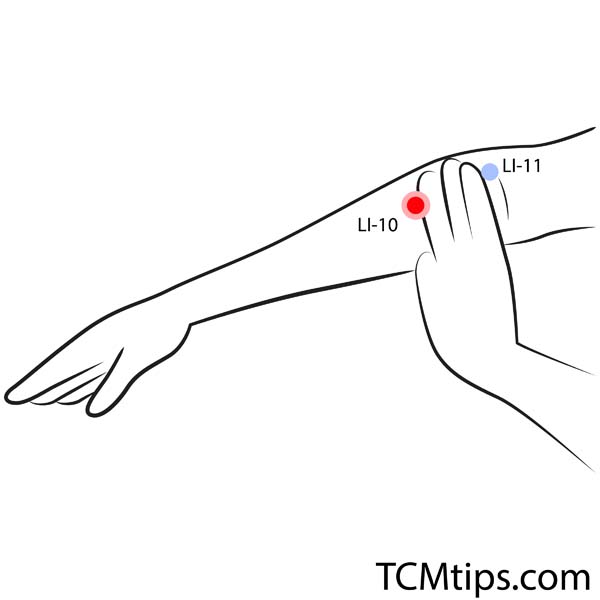
LI-10, also known as “shousanli” or “arm three miles”, is located about three finger widths below LI-11. You can easily locate LI-11 as it is in the depression at the outer end of the elbow transverse lines. For treatment of carpal tunnel, it is helpful for motor impairment of the upper limbs and shoulder and back pain. Massaging this area will relax the muscles around the wrist, relieving pressure from the median nerve.
LI-10 is also one of the acupuncture points for tennis elbow.
3. Acupoint: LI-5 (Other Names: Large Intestine-5/Yang Xi/Yang Stream)
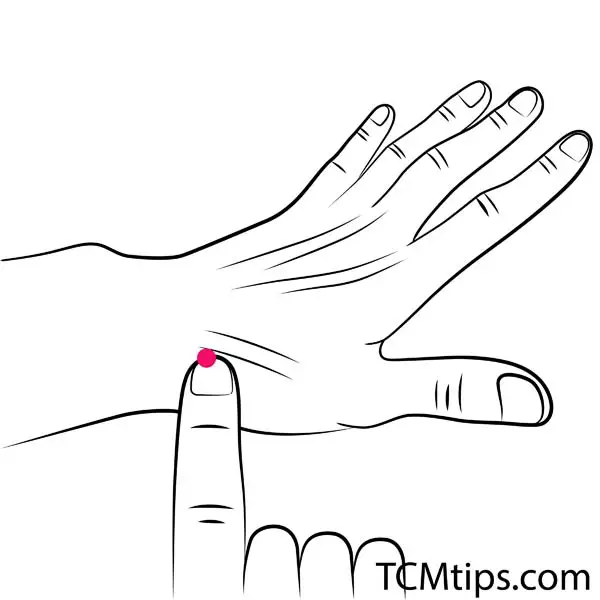
LI-5, also known as “yangxi” or “yang stream”, is located below your thumb and right above your wrist in the depression between the extensor pollicis longus and brevis tendons. It is easier to find if you tilt your thumb upward. This acupoint is mainly targeted for wrist pain and weakness.
4. Acupoint: TE-5 (Other Names: Triple Energizer-5/Wai Guan/Outer Pass)
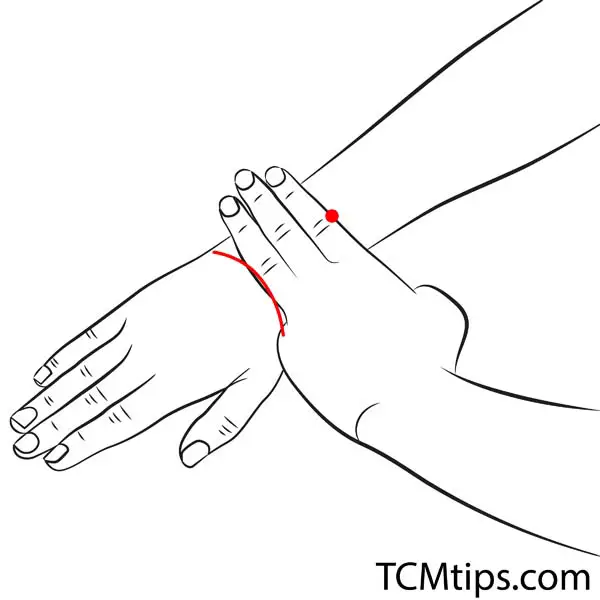
TE-5, also known as “waiguan” or “outer pass”, is located about three finger-widths below your wrist on the dorsal side of the forearm. One of the main functions of this acupoint is that it moves qi, which specifically improves arm and wrist joint pain.
5. Acupoint: LU-10 (Other Names: Lung-10/Yu Ji/Fish Border)
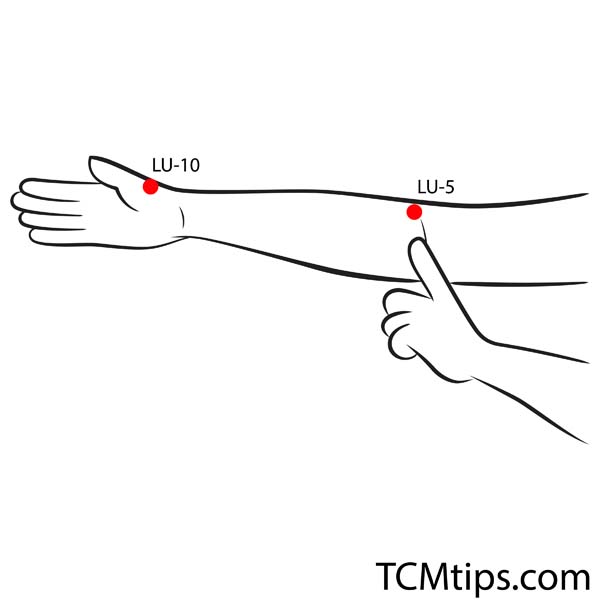
LU-10, also known as “yuji” or “fish border”, is located at the midpoint of the first metacarpal bone of your thumb. While it is known for clearing lung and throat infections, it can also address hand pain due to carpal tunnel syndrome. LU-10 is especially helpful if the pain is affecting your hand-thumb coordination, making it difficult for you to manipulate objects.
6. Acupoint: LI-4 (Other Names: Large Intestine-4/He Gu/Joining Valley)
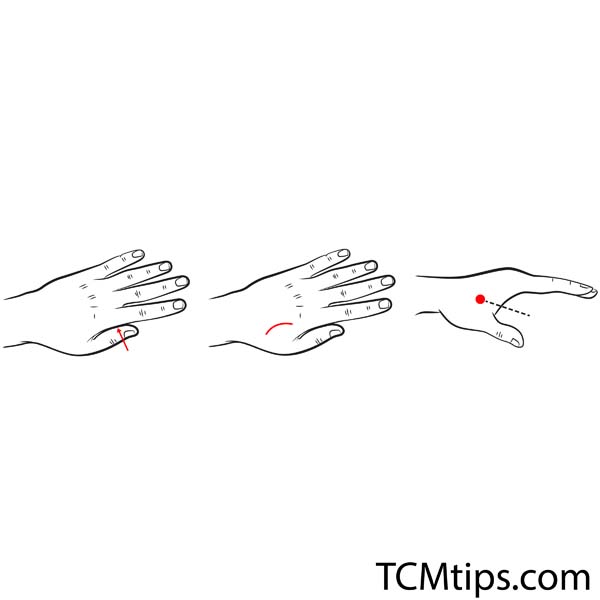
LI-4, also known as “he gu” or “junction valley”, is located in the fleshy area between the index finger and thumb. Professionals often target this acupoint for general pain relief throughout the body, especially in the face, head, and neck. However, you should avoid LI-4 if you are pregnant as it could induce labor.
LI-4 is also one of the acupressure points for gas and bloating.
7. Acupoint: PC-8 (Other Names: Pericardium-8/Lao Gong/Palace of Toil)
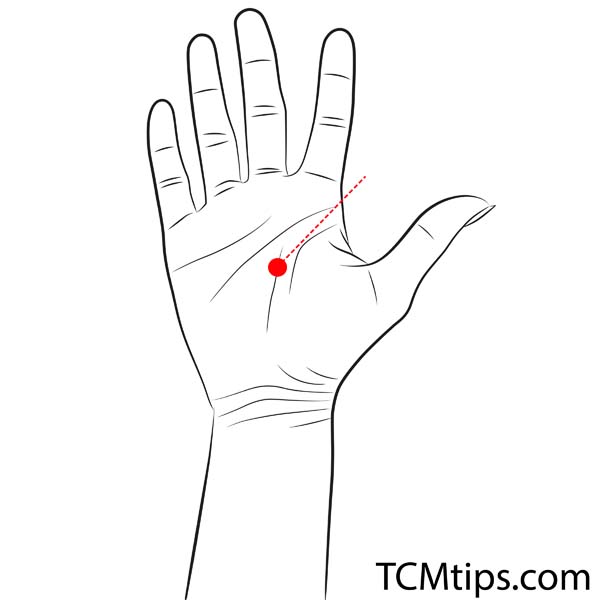
Pc-8, also known as “laogong” or “palace of toil”, is located in the center of your palm. You can use Pc-8 to clear heat (inflammation) in your hand. It is also useful for clearing heat in the mouth and cooling blood.
Interestingly, this is also one of the acupressure points for snoring.
8. Acupoint: PC-7 (Other Names: Pericardium-7/Da Ling/Great Mound)
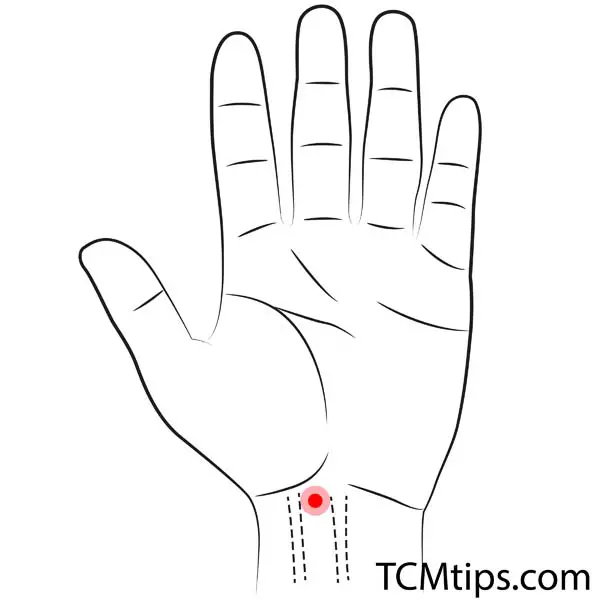
PC 7 acupuncture point, also known as “daling” or “great mound”, is located in the middle of your inner wrist. One of its main clinical usages is to treat carpal tunnel syndrome and any other general wrist and thumb pain.
9. Acupoint: TE-4 (Other Names: Triple Energizer-4/Yang Chi/Yang Pool)
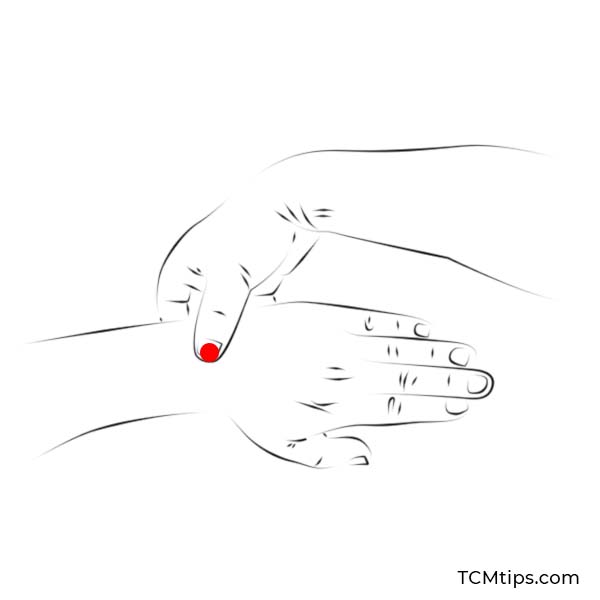
TE-4, also known as “yangchi” or “yang pool”, is located in the center of the horizontal stripes at the junction of the back of the hand and the wrist. TE-4 helps to relax and clear channels, especially around the arm. It relieves pain in the arm, shoulder, and wrist for carpal tunnel syndrome.

Try our Anti-Aging Gua Sha Tool designed to bring out your skin’s natural glow.
Best Gua Sha Product- Anti-Aging: The tool is designed to target 11 specific aging signs such as wrinkles and sagging skin. By following the 7-step routine, users can improve skin firmness and reduce fine lines naturally.
- Enhances Skincare Routine: It works effectively with serums and lotions, boosting absorption and efficacy of skincare products.
- Visible Skin Improvement: Users can expect a smoother complexion, reduced puffiness, and a more youthful appearance.
 P. Sze
P. Sze 
















